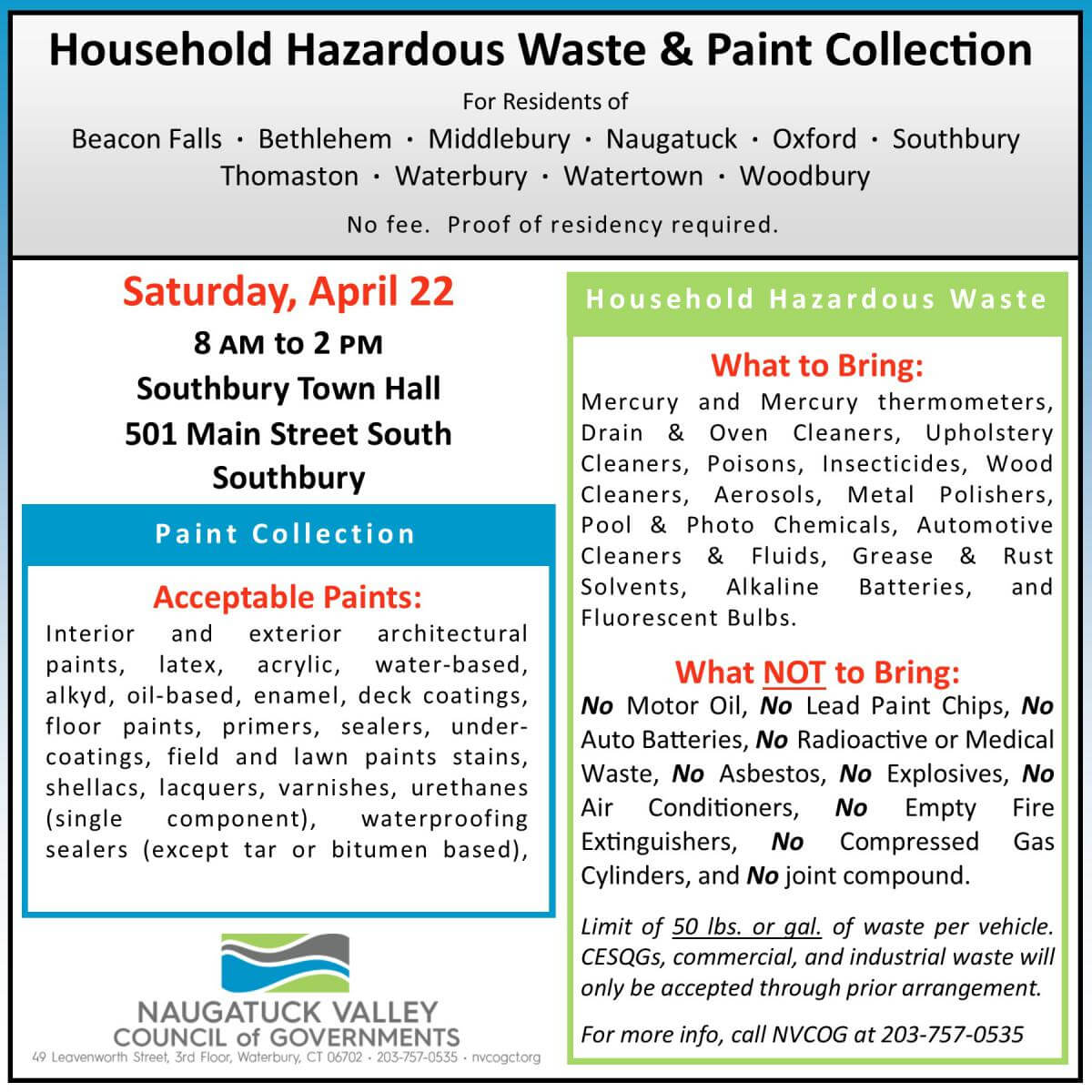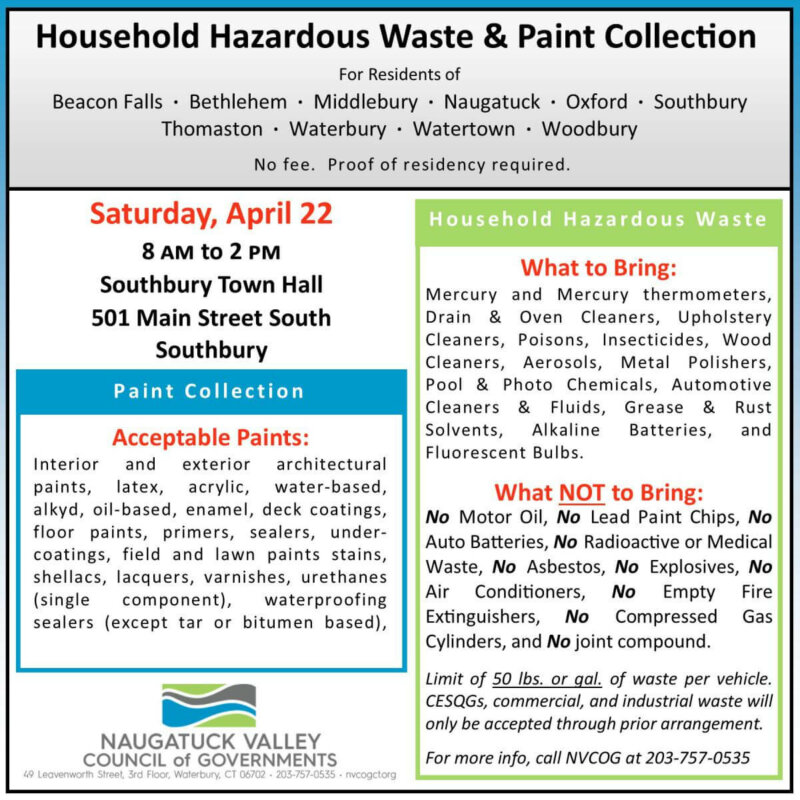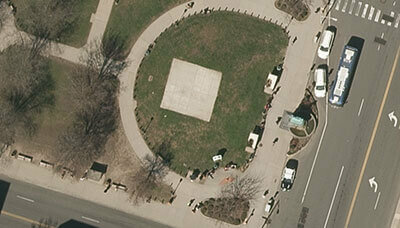
Assessment Study Details Major Economic, Quality of Life Benefits of Completing Naugatuck River Greenway Trail
Contacts:
Mark Nielsen Laura Brown
Naugatuck Valley Council of Governments UConn Extension Community and
203-757-0535 Economic Development Program
mnielsen@nvcogct.org (860) 207-0063
laura.brown@uconn.edu
Assessment Study Details Major Economic, Quality of Life Benefits of Completing
Naugatuck River Greenway Trail
The final report on the potential economic and quality of life benefits from the complete construction of the Naugatuck River Greenway, a planned multi-use, active transportation route along the river, was released today. The results of the study indicate the benefits could be substantial. The Naugatuck River Greenway (NRG) Steering Committee approved the study for release. It is designed to assist each of the 11 greenway municipalities and local greenway committees in evaluating efforts to complete sections of trail in their communities and determining the financial viability of investing in its construction. A draft of the study was released earlier, in January, to provide an opportunity for peer review and comment, as well as a way to vet the methodologies and assumptions. Based on comments received and further discussion by and among the Steering Committee and research team, adjustments were made to the previously released economic benefits. While the estimated economic benefits shown in the final report are lower than those included in the draft report, the results remain compelling and indicate a high return on the investment in the construction.
The planned NRG Trail will follow the Naugatuck River for 44 miles bringing the trail through parts of Torrington, Litchfield, Harwinton, Thomaston, Watertown, Waterbury, Naugatuck, Beacon Falls, Seymour, Ansonia and Derby. Planning, design and construction is taking place in sections, with each community securing land and construction funding within their respective boundaries.
The study indicates the direct construction expenditures for the NRG are expected to reach $77.2 million (2015 dollars) by the year 2030. However, this total cost pales in comparison of the total potential economic benefits that would accrue to host communities and the entire region at large. The research team investigated direct economic benefits in terms of annual spending by visitors to the trails, monetized health benefits, and amenity benefits derived by living close to the trail. Indirect and induced economic impacts were estimated based on expected changes to the county and state level economies from these direct inputs.
The study was based on complete construction of the NRG by 2030 with it being fully operational in 2031. Three analysis scenarios were modelled: baseline, moderate growth in visitations and an accelerated growth pattern that would result in a doubling of the number of users by 2013. To be conservative in the analysis, the results focus on the baseline case.
Currently, total annual visits to open sections, only about 4.1 miles in four communities, is estimated at about 195,500. These visitors spend about $2.9 million each year on various items such as snacks, beverages, food, gear and travel. By 2031, annual visitations are projected at 2.6 million and annual spending would reach about $42.6 million under the baseline scenario.
The study also looked at the potential health benefits that would accrue to users who frequently use the trail. Reports published by the US Surgeon General indicate that moderate and frequent exercise could reduce the incidence of various medical conditions such as obesity, diabetes and cardiovascular disease, as well as various forms of cancer, including breast cancer. Trails have been proven to be convenient, safe and non-threatening places for people to exercise and realize health benefits. By 2031, the monetized value of reducing the incidences of these diseases and avoiding premature death would amount to about $260 million. This is based on the estimated number of people who would frequently visit the NRG and the dollar value of an avoided premature death as provided in the Surgeon General report.
Amenity benefits were also estimated. This is based on the value that people realize by living close to the trail compared to those who must travel longer distances to consume the same amenity. By 2031, this amenity benefit would total about $34.6 million, up from the current value of $5.1 million.
The regional economies of New Haven and Litchfield counties, as an aggregate, would also benefit from the construction of the trail. In 2031, indirect and induced impacts would increase personal disposable income by $91 million and expand Real Gross Domestic Product (RDGP) by $43 million (in 2009 dollars). About 516 jobs would be added and the area would support an increase of about 1,200 in population. The NRG Economic Impact Study was conducted by the Connecticut Center for Economic Analysis (CCEA), a University Center located in the School pf Business at the University of Connecticut, in collaboration with the UConn College of Agriculture, Health and Natural Resources Extension program in Community & Economic Development (Extension). It was published by the Naugatuck Valley Council of Governments (NVCOG) in partnership with the Northwest Hills Council of Governments (NHCOG).
The project was guided by the NRG Steering Committee, a group made up of representatives of the 11 greenway communities, state and federal representatives, and other key stakeholders. Funding to conduct the study was received from The Connecticut Community Foundation, The Valley Community Foundation, The Community Foundation of Northwest Connecticut and The Katharine Matthies Foundation.
“The study includes extensive, compelling data for creating the NRG,” said NRG Steering Committee Co-Chair Ingrid Manning. “While it would be a substantial construction cost, the investment could bring major economic benefits. Improved quality of life and economic well-being of area residents via increased property values, health benefits and economic growth are goals shared throughout the region. However, to realize these benefits it will be important for the communities to properly plan, promote and support the greenway, and encourage people to use it.”
In the weeks ahead, the NRG Steering Committee and project partners will present study findings to municipal officials, developers, development agencies and the public both electronically and via an outreach forum. The NRG corridor has been officially designated as a greenway by the CT Greenways Council and the CT Department of Energy and Environmental Protection (DEEP). The entire greenway trail is identified as a trail of statewide significance in the Connecticut Recreational Trails Plan, and it was designated as one of 101 America’s Great Outdoors projects in 2011 by the U. S. Department of the Interior.
The complete study can be found at:
http://nvcogct.org/sites/default/files/pictures/headers/NRG-EconomicReport-FinalDraft-Spreads.pdf
Additional information can be found at www.NaugatuckRiver.net , at www.nvcogct.org, and at http://communities.extension.uconn.edu/.
Spring 2016 State-wide Orthophotography now available
NVCOG has received delivery of the 3” pixel resolution orthophotography captured in the spring of 2016 for the entire state of Connecticut. Connecticut COGs acquired this color digital orthophotography through funds received from the Connecticut Regional Performance Incentive Program administered by the Office of Policy and Management.
Image formats available include:
- GeoTIFFs – Highest quality image available but also the largest file size by a lot.
- MrSID Generation 3 town-wide mosaic – Compressed image file with 3 image bands (blue, green, red) suitable for use with older software systems and with AutoCAD.
- MrSID Generation 4 town-wide mosaics – Compressed image file with 4 image bands (blue, green, red, near-infrared) suitable for use with ArcMap 10.2 and above.
Town-wide MrSID files may be 2-10 GB in size and theGeoTIFFs could be up to 100 GB for all tiles within a municipality. The data is also available for download and as a map service from UCONN’s CT ECO website. http://cteco.uconn.edu/data/flight2016/index.htm Download of data for an entire municipality could be prohibitively slow so copying the data to a hard drive may make more sense.
Municipalities that would like a copy of this data should provide a portable hard drive to NVCOG. Please contact Glenda Prentiss if you have any questions or would like an estimate of the hard drive requirements for your municipality’s data. gprentiss@nvcogct.org , 203-489-0370
NVCOG Releases RFP for Environmental Services
The Naugatuck Valley Council of Governments (NVCOG) intends to hire an LEP selected from the recently finalized Regional Brownfields Partnership (RBP) short list. The firm selected will provide environmental assessment services at 420 Main Street, Ansonia through an EPA funded Assessment grant. See the NVCOG Vendors page for more information.
New Interactive Map Highlights Current TIP Projects
NVCOG recently completed a new online interactive Story Map which presents the location, details, and funding for current Transportation Improvement Projects (TIP) in the NV region.
Check it out here.
NVCOG Releases RFP for Environmental Services
The Naugatuck Valley Council of Governments (NVCOG) intends to hire an LEP selected from the recently finalized Regional Brownfields Partnership (RBP) short list. The firm selected will provide environmental assessment services at 0 French Street, Watertown, CT through an EPA funded Assessment grant. See the NVCOG Vendors page for more information.
Public Outreach & Environmental Justice Policies available for comment
The NVCOG Public Outreach and Environmental Justice Policy Drafts are available for public comment.
The Draft Public Outreach Policy guides when, where, and how the NVCOG connects with residents on planning issues. This includes how the NVCOG involves the public during plan development, public outreach periods, and publication. The policy also outlines the stages of plan development as they relate to public participation.
The Draft Environmental Justice Policy guides how the NVCOG considers the needs of minorities and low-income residents in its planning. The NVCOG aims to ensure that no COG-funded project has a disproportionate negative impact on these communities. This policy identifies these communities within the NVCOG planning region and develops a process for considering the needs of all residents during the planning process.
Copies are available in English or Spanish on our Civil Rights page.
There will be an informational meeting February 2nd, at 6:00pm, at the NVCOG offices in downtown Waterbury:
49 Leavenworth Street, 3rd Floor
Waterbury, CT 06702
The meeting location is fully accessible, and is near the pulse location on the Waterbury Green and the Waterbury Metro-North station. Parking is available on site. Translators are available with five days’ notice.
Regional Brownfields Partnership Short List for Environmental Services Finalized
The Naugatuck Valley Council of Governments (NVCOG) released a Request for Qualifications (RFQ) for environmental services on Tuesday, October 25, 2016. Submittals were due to NVCOG by Tuesday, November 22, 2016. Twenty-two submittals were received. The Regional Brownfields Partnership (RBP) committee selected six firms to participate in a short list intended to facilitate the procurement of environmental services through NVCOG. The selection process was informed by an evaluation worksheet released with the original RFQ. More information is available in the attached.
Sustainable CT to hold regional sustainability forums
Sustainable CT, a partnership of municipal leaders, philanthropic foundations, the Institute for Sustainable Energy, and other stakeholders, is soliciting input for residents’ vision for sustainable towns and cities in our state. The organization invites you to attend one or more regional forums in January 2017.
Please REGISTER for one or more of the following forums:
• Tuesday, January 10th, 1:00 – 2:30 p.m., Brookfield Town Hall (Room 133)
• Thursday, January 19th, 11:00 – 12:30 p.m., Middlesex Community College (Multipurpose rooms 808C and D), Middletown
• Thursday, January 19th, 7:00 – 8:30 p.m., West Hartford Town Hall (Room 400)
• Wednesday, January 25th, 2:30 – 4:00 p.m., Three Rivers Community College (F-Wing, Multipurpose room), Norwich
• Friday, January 27th, 9:00 – 10:30 a.m., Seymour Town Hall
Forums are free, open to all, and organized by the Institute for Sustainable Energy at Eastern Connecticut State University, in partnership with Connecticut’s nine councils of governments. Sustainable CT will be a robust certification program that includes: (1) A road map for towns and cities with a menu of voluntary actions intended to make communities healthier, safe, resilient, efficient, and livable; (2) A flexible design that meets the needs of all municipalities (urban, rural, large, small); (3) Resources and support, including funding, to help municipalities implement actions; and (4) Public recognition for municipal sustainability achievements.
Event Flyer
You can learn more at www.sustainablect.org.



